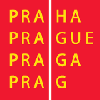Conveners
Double Parton Scattering
- Rafal Maciula (Institute of Nuclear Physics PAN)
Double Parton Scattering
- Arthur Moraes (CBPF - Brazilian Center for Physics Research (BR))
Double Parton Scattering
- Daria Savrina (M.V. Lomonosov Moscow State University (RU))
Double Parton Scattering
- There are no conveners in this block
A summary of results on double parton scattering processes from CMS will be presented. The focus of the talk will lie on the latest result on WW production via double parton scattering. The data set in use is from the Run-II data taking periods in 2016 and 2017, corresponding to an integrated luminosity of 77.4 fb-1. The result constitutes the first evidence of this process, with an observed...
The talk is going to include the latest LHCb results on searches of double parton scattering (DPS) effects in the data, taken by the experiment in proton-proton collisions during Run1 and Run2 of the LHC operation. The measurements are performed for the different final states and mainly focused on the processes involving heavy quarks, which provide the most precise probing of factorization...
A composite nature of hadrons leads to a complicated structure of the underlying event in hadronic collisions. In particular it give rise to a possibility to have two hard interactions per one hadron-hadron collision, so called double parton scattering (DPS) phenomenon. Among different possible DPS production processes the four-jet DPS production is of particular interest due to a high...
We examine currently available data for Double Parton Scattering and discuss the energy behaviour of the extracted effective cross-section. A variety of models is compared with different data sets. We find that processes dominated by gluons initiated DPS, such as 4 jet production, exhibit a rising behaviour as the energy increases. Eikonal models as well as models based on empirical fits...
The associated production of vector boson with quarkonia is a key observable for understanding the quarkonium production mechanisms, including the separation of single and double parton scattering components.
This talk will present the latest measurements from ATLAS on quarkonium production, including the associated production of W+J/psi.
I will discuss a novel channel for phenomenological studies of the double-parton scattering (DPS) based upon associated production of charm and bottom quark-antiquark pairs in well-separated rapidity intervals in ultra-peripheral high-energy proton-nucleus collisions. This process provides a direct access to the double-gluon distribution in the proton at small-x and enables one to test the...
I will review the status and prospects of studies of Double Parton Scatterings with associated and pair production of quarkonia. This includes J/psi pairs, Upsilon pairs, Upsilon+J/psi, J/Psi+D, Upsilon+D, J/psi+Z and J/psi+W at the LHC and the Tevatron.
We consider a new mechanism for prompt simultaneous production of $J/\psi$ and $\Upsilon$ mesons in high energy hadronic collisions. The process is considered as a perturbative production of $B_c^{(*)}$ mesons $g{+}g\to B_c^{(*)} {+}\bar{B_c}^{\!\!(*)}$ followed by a long-distance final state interaction that rearranges the quarks to form $J/\psi$ and $\Upsilon$ mesons. Passing from...
Double parton distributions (DPDs) are an essentialingredient in the computation of the full DPS cross sections. Their numerical handling is complicated by their structure, which depends on more than twice the number of parameters with respect to regular PDFs. Furthermore, in order to make phenomenological predictions for DPS, it is necessary to also include heavy-quark contributions in the...
Here we present our studies on the so called double parton distribution functions (dPDFs) and transverse proton structure. Double PDFs appear in the double parton scattering (DPS) cross section in high energy proton-proton and proton nucleus collisions. These new distributions represent a novel and promising complementary tool, w.r.t. TMDs and GPDs, to access the 3D partonic structure of the...
Double parton distributions (DPDs) are an important piece in the descriptions of double hard interactions. On the lattice we calculate correlation functions of two local quark currents, which can be related to Mellin moments of DPDs. For the first moment we calculate all contributing Wick contractions for the nucleon (proton), considering several channels corresponding to the quark...
W boson creation associated with dijet production is a promising channel to study double parton interactions at the LHC. In this talk we review and update predictions for the W+jets signal in proton lead collisions and discuss a new method which could give access to longitudinal and/or transverse structure of the proton.
I will present results of my investigations on the topics enumerated in the title based on my joint work with my collaborators.
In this talk, a new Monte-Carlo simulation of double parton scattering (DPS) at parton level is presented. In this simulation, the dynamics of the 1→2 perturbative splittings is consistently included, with the impact-parameter dependence taken into account. The evolution is performed using an angular-ordered parton shower which is combined with a set of double parton distributions that depend...
Measurements of double parton scattering in proton-proton collisions provide insight
into the structure and long-range low-momentum scale interactions of the proton. In this
talk we present a measurement of the double-parton scattering contribution to
four-lepton events at √s=8 TeV. An artificial neural net is used to optimise the analysis
and an upper limit on the double-parton scattering...
